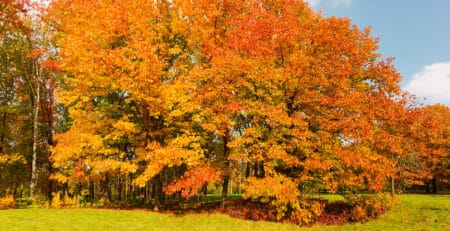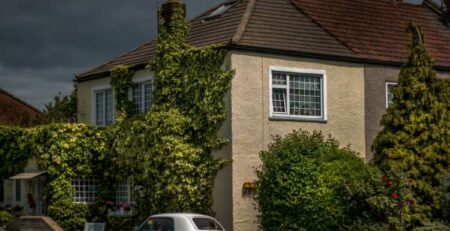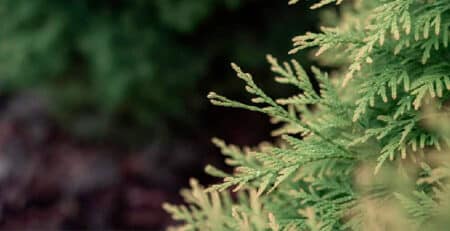Find the Best Tree Removal Prices in Your Area
In 2016, insects have affected 15.5 million hectares of Canada’s forests. In Ontario alone, the forest tent caterpillar destroyed 1.1 million hectares in the same year.
That’s just a single species, but there are at least 300 insects found in the Great White North’s forests. On top of that are at least 200 diseases that infect and kill the nation’s flora.
Unfortunately, many of these destructive species don’t restrict their movement in the wild. They can make their way into your beloved trees at home.
If you suspect that you have a dying tree at home, it’s best to start comparing tree removal prices ASAP. Affordable yet prompt tree removal services can help protect your other trees. More than that, they can prevent health and safety hazards.
Ready to learn more about tree removals, from their importance to how you can find low-cost offers? Then let’s dive right into it!
Why Do You Even Need to Remove a Tree?
Over time, sick trees can become a safety hazard by “dropping” dead parts like stems and branches. Even if these are already quite hollowed-out, they can still weigh a lot. If they fall on someone, they can cause severe injuries.
Moreover, broken trees and tree parts can also damage utility lines. They can cause power and utility outages. This can endanger the elderly or people who rely on electric-powered medical equipment.
Aside from the above, here are other key reasons to get trees removed from your property.
Their Dead Parts Can Fall Onto Your Home
Dying or dead trees are more prone to breakage, and these broken parts can fall on your house. Your roof can sustain serious damage, such as cracks and holes, from their weight. They may also shatter glass and damage anything that they collapse on.
Liability for Injury or Property Damage to Others
If a tree falls onto the property of your neighbor, you may be liable for the resulting injuries. The same goes if the tree (or part of it) causes damage to your neighbor’s property.
Shallow Roots Can Cause Property Damage
Necessary tree removal isn’t limited to diseased, dying, or dead trees. For instance, some types of trees have roots that don’t grow deep enough. Instead, they have shallow roots that can spread and extend right below the ground.
These shallow roots can still be powerful enough to upheave concrete though. If this happens, they can damage sidewalks, driveways, and other concrete surfaces. They can also wrap around plumbing pipes, crushing water and sewer lines.
Moreover, trees with shallow root systems often don’t get enough nutrients. This can then affect their health, making them less dense and stable. As a result, they’re more prone to breakage and damage, especially during storms.
Saving Trees From Invasive Pest Species
Invasive species are organisms that cause harm in a new environment that it’s not native in. They cause ecological and economic harm by triggering the extinction of native species. They can do so by competing with the indigenous species for resources.
One of the invasive insect species found in Canada’s trees is the Japanese Beetle Trap. It feeds on at least 300 to 350 species of flora, and interestingly, that includes the Japanese maple. However, these beetles also love feasting on birch, oak, and walnut trees among many others.
An even more dangerous invasive beetle species is the metallic-green Emerald Ash Borer. It was first discovered in Ontario, but it has spread to Quebec and also threatens Manitoba. In Toronto alone, this beetle has caused the removal of 20,000 trees in 2014, and just within the city’s confines.
Invasive Pest Species May Also Be a Threat to Human Health
Some insects don’t just endanger trees — they may also cause health problems in humans. The Emerald Ash Borer, for instance, appears to have triggered a rise in heart and lung illnesses in the US. A study found that as the beetles killed ash trees, they may have also indirectly killed at least 21,000 people.
All these should be enough reason for you to get in touch with a certified arborist. The sooner you do, the sooner you can determine if you need to get a tree removed from your property.
How To Tell That You Need to Get That Tree Removed
Don’t wait for a tree to fall or drop massive branches. Here are some ways to tell that you may need to get a tree on your property removed ASAP.
Signs of Infection
Deep splits or cracks in the bark often signal a tree infection. The same goes if touching the wood makes it crumble. Dead stems, branches, and limbs also indicate infection.
If you see mushrooms or other fungi on the trunk, that’s another sign of infection. Holes on the trunk may mean that there are insects and other pests living in the tree.
It’s Not Growing as Well as Your Other Trees
If you suspect that one of your trees is unhealthy, compare it to similar trees on your property. Noticeable foliage discoloration or thin leaf cover is often a sign of an unhealthy tree.
Hollowed-Out
Have you noticed that one of your trees have a trunk that peels of large sections of bark? If so, then it’s possible that it’s already hollow inside. Large rotting sections usually accompany this sign that your tree has become hollow.
In this case, give the trunk a firm (but not destructive) tap. If it produces a hollow-like sound, then it’s best to call an arborist. Even if the tree isn’t dead yet, being hollow already makes it a safety threat.
Considerable Leaning
Some amount of leaning doesn’t always necessitate removal. However, if your tree leans too much to one side, then it may have a structural issue. All that weight concentrated on a single side may uproot the tree.
It’s Too Close to a Building or Utility Line
A healthy tree can still cause property or utility line damage if it grows too near these areas. A storm, for instance, can break off low-hanging branches onto your roof. A tree may also grow into utility lines, causing obstructions or even hazards.
How Much Will It Cost You? Factors That Affect Tree Removal Prices
The most accurate way to determine how much the service will cost you is to have an arborist on site. Certified arborists will assess your tree and find out if you even need to get it removed. With a thorough physical examination, they can give you a more accurate break down of your costs.
Still, you can get some idea of tree removal costs using the following factors.
Tree Size
It’s usual for bigger and taller trees to cost more to remove. That’s because its large size may require more than just a few people to work on it. The removal team may also need to cut down more of its limbs prior to its actual removal.
At the same time, a shorter but thicker tree may cost more to remove than a taller, thinner tree. A tree may be shorter, but if it’s wide, felling it will take a lot more time and people. The removal team may also need to first cut it into sections for safety reasons.
Condition
Dying or dead trees are also usually easier to fell since they’ve already grown weak. However, they may also have severe structural damage, making them more dangerous. Leaning trees may also be unstable, so they cost more to remove.
Location and Accessibility
If the tree is easily accessible, such as if it’s out on your front yard, then removing it will likely cost less. If it’s right beside your house, fence, or electrical wires though, the removal rates may be higher.
The Need for Emergency Removal
If a tree is about to fall due to decay, it’s best to get it removed as soon as possible. Again, such trees can cause serious injuries and property damage.
Emergency removal typically costs more than non-emergency services. Still, this is better than having someone injured because of a collapsed tree. It’s also far cheaper than the potential property damage that a fallen tree can cause.
Smart Ways to Save on Tree Removal Costs
To save on your tree removal project, be sure to keep these tips in mind.
Contact an Arborist at the First Sign of Tree Disease
Don’t put off treating a tree disease. If you catch infections and infestations early on, an arborist may still be able to save your tree. As such, you may not even have to get the tree removed in the first place.

Obtain Quotes
Professional arborists provide job estimates free of charge, so take advantage of that. Quotes will provide you a clearer picture of what the job entails and what the rates already include. This will then give you an idea of the steps that you may be able to do on your own.
Do Some of the Digging on Your Own
Call your utility providers first to determine if there are any lines near the tree. If there’s none, consider doing part of the digging needed for removing a small tree. This will cut down the time that the removal team would spend on your property.
This may then help you trim your tree removal costs too. However, check with the removal team first, as this may already be part of their services.
Grind the Stump on Your Own
Removing tree stumps may be necessary especially if the tree used to house pests. However, stump removal can also be a considerable addition to your final bill. If you can, you may grind the stump on your own as this may be able to save you a few hundred dollars.
Clean the Debris Yourself
If you need to remove a smaller tree, you may be able to clean the debris on your own. Ask the removal service if doing so will lower your final bill. This may be your ticket to securing cheap tree removal rates.
Use the Leftover Wood
Hauling and disposing wood from felled trees may also come at an extra price. So, why not keep the solid wood for woodwork projects? You may also want to keep the wood to use for your fireplace!
Proper Maintenance: A Key to Saving Your Trees From Removal
Proper maintenance is the best way to save money while also protecting your trees. Tree pruning and trimming, for instance, help make your trees healthier and stronger. With fewer parts to “feed”, your trees can take on more nutrients.
A properly-nourished tree has a lower risk of developing diseases. Since all of its parts get enough nutrients, then it’s unlikely to develop dead branches and limbs.
Pruning and trimming also help to distribute weight evenly. This then helps keep the tree balanced and structurally sound. As a result, your trees will have fewer cases of broken branches and limbs.
Moreover, proper tree maintenance helps control the growth of trees. This means that the tree is unlikely to grow into power and utility lines. It also helps you avoid tree branches from growing over your neighbor’s property.
There’s also the added benefit of maintaining your trees’ aesthetic appearance. With regular trimming and pruning, you can influence how and where the tree grows. This also helps prevent excessive and dangerous leaning.
Tree Removal Helps Keep Your Other Trees and Everyone Else Safe
There you have it, your ultimate guide on removing trees and how to lower your tree removal prices. What’s important is to not put off getting in touch with an arborist if you suspect that you have an ill tree. There’s still a possibility that you can save that tree, but if not, removing it will protect your other trees.
Most importantly, prompt removal of a sick or dying tree can prevent it from harming humans and pets.
Ready to get your free tree removal estimate? Then please don’t hesitate to check out our service areas and get in touch with us!







